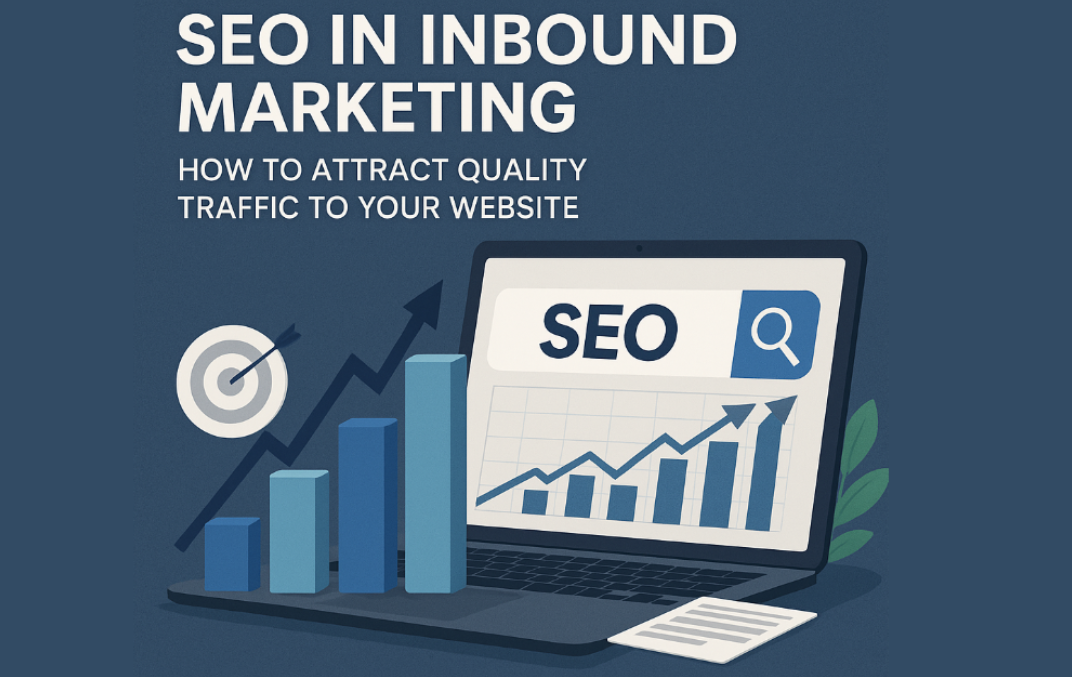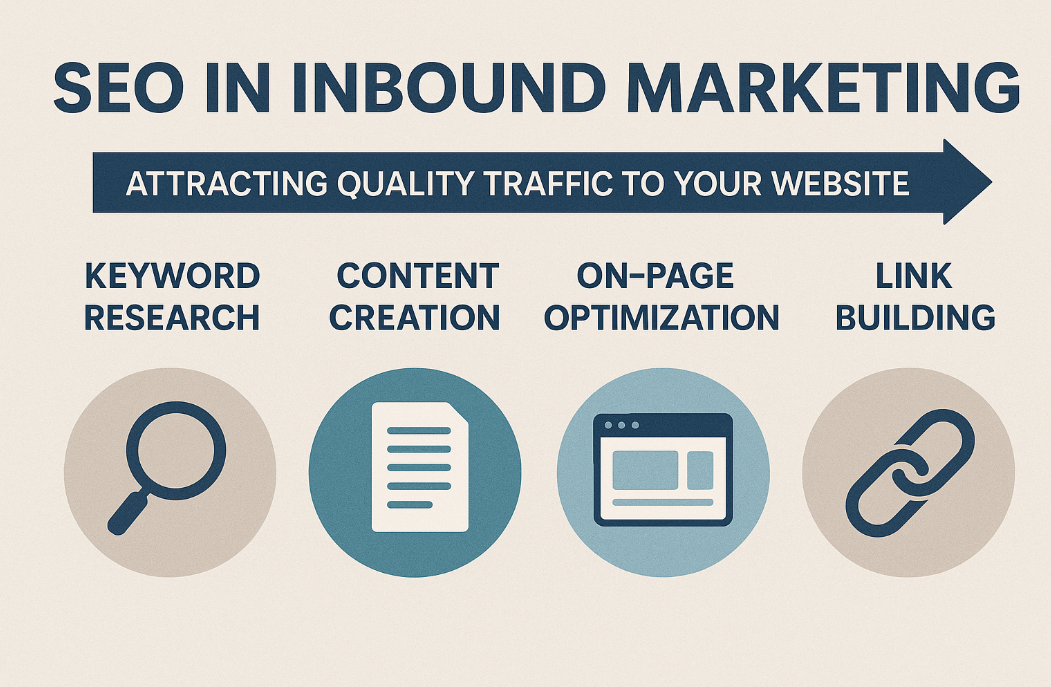
Table of Contents
- Introduction
- Understanding Inbound vs. Outbound Marketing
- SEO as the Backbone of Inbound Marketing
- Keyword Research and Strategy
- Content That Ranks and Converts
- On-Page SEO Techniques
- Off-Page SEO and Backlink Building
- Technical SEO for Better User Experience
- Local SEO for Targeted Traffic
- AI and SEO in the Modern Inbound Strategy
- Conclusion
- FAQs
Introduction
Let’s face it—today’s consumers don’t want to be sold to. They want to discover solutions on their own terms. That’s where inbound marketing comes in, and SEO is its engine. When done right, SEO attracts people who are already searching for what you offer, making your job a whole lot easier.
Understanding Inbound vs. Outbound Marketing
Inbound marketing is about attracting leads organically by providing value through content. Outbound, on the other hand, relies on interruptive tactics like cold calls or paid ads. While outbound might generate quick visibility, inbound builds long-term trust and loyalty. SEO is central to this approach because it ensures your content is visible at the right time to the right audience.
SEO as the Backbone of Inbound Marketing
Search Engine Optimization is more than ranking first on Google. It’s about optimizing your site and content so that potential customers can easily find you when they need you. SEO complements every stage of the inbound marketing funnel—from awareness to consideration to decision—by helping content reach users based on their intent.
Keyword Research and Strategy
One of the biggest mistakes marketers make is guessing what people search for. Keyword research helps remove the guesswork. It reveals exactly what your audience is typing into search engines and what their intent is.
Long-tail keywords are especially powerful. They may have lower search volume, but they attract high-intent traffic that converts better. Instead of trying to rank for “CRM software,” you might target “best CRM software for small law firms”—a phrase more likely to attract your ideal customer.
Tools you can use for keyword research:
- Ahrefs
- SEMrush
- Google Keyword Planner
- Ubersuggest
Content That Ranks and Converts
SEO isn’t just about traffic. It’s about the right traffic. That’s why creating content that both ranks well and converts visitors is crucial.
Blog posts, how-to guides, whitepapers, and evergreen content can all serve different parts of the buyer’s journey. Use attention-grabbing titles, clean formatting, and a clear call to action. Make sure your content answers the user’s query thoroughly and keeps them engaged long enough to trust you.
Also, update old content regularly. Evergreen content isn’t “set it and forget it”—Google loves freshness, and so do readers.

On-Page SEO Techniques
On-page SEO involves optimizing elements on your website so search engines can understand your content better. Start with your title tags and headers. Make them descriptive and include your main keyword naturally.
Internal linking is another essential factor. It helps distribute link equity across your site and keeps users browsing longer. Don’t forget about images. Compress them to reduce load time and add descriptive alt text to improve accessibility and boost image search traffic.
Off-Page SEO and Backlink Building
Backlinks are a vote of confidence from other websites. The more high-quality sites link to yours, the more trustworthy you appear to search engines.
You can build backlinks through:
- Guest posting on niche-relevant blogs
- Reaching out to journalists and influencers
- Creating share-worthy content like statistics roundups or industry reports
Focus on earning links naturally—avoid spammy link farms or shortcuts. Quality trumps quantity every time.
Technical SEO for Better User Experience
Technical SEO ensures your website is easy for search engines to crawl and index, and just as easy for users to navigate. A slow, buggy website will drive visitors away, no matter how good your content is.
Key technical aspects include:
- Mobile-friendliness
- Fast page load speed
- Secure HTTPS connection
- Clean, crawlable site structure
Use tools like Google Search Console and Screaming Frog to spot and fix issues early.
Local SEO for Targeted Traffic
If you serve a specific geographic area, local SEO is your best friend. It helps you appear in local searches like “best yoga studio near me” or “accountant in Brooklyn.”
Optimize your Google Business Profile with accurate information, add location-specific keywords to your content, and encourage happy customers to leave reviews. Consistency across local listings (NAP—name, address, phone number) is critical.
AI and SEO in the Modern Inbound Strategy
Artificial Intelligence is reshaping how we approach SEO. From automated content briefs to predictive keyword suggestions, AI helps marketers move faster and smarter.
Use tools like Clearscope, Surfer SEO, and Jasper to enhance your content strategy. But remember—AI can assist, not replace. Your unique voice and insights are irreplaceable.
Conclusion
SEO isn’t just a traffic-generation tactic. It’s a long-term strategy that powers every part of your inbound marketing machine. By aligning your content, website, and outreach with what users are actually searching for, you attract quality leads that are already halfway down the sales funnel.
Inbound marketing without SEO is like a car without an engine—it may look good, but it won’t take you anywhere. Invest in smart SEO, stay consistent, and the right audience will come to you.
FAQs
1. What’s the difference between inbound marketing and SEO?
Inbound marketing is a broader strategy to attract and nurture leads. SEO is one of the primary tactics within that strategy to drive organic traffic.
2. How long does it take to see SEO results?
Usually 3 to 6 months for noticeable improvements, but it can vary depending on your industry, competition, and how aggressive your SEO strategy is.
3. Is blogging still effective for SEO in 2025?
Absolutely. Blogging remains a powerful tool to answer user queries, build authority, and target long-tail keywords.




